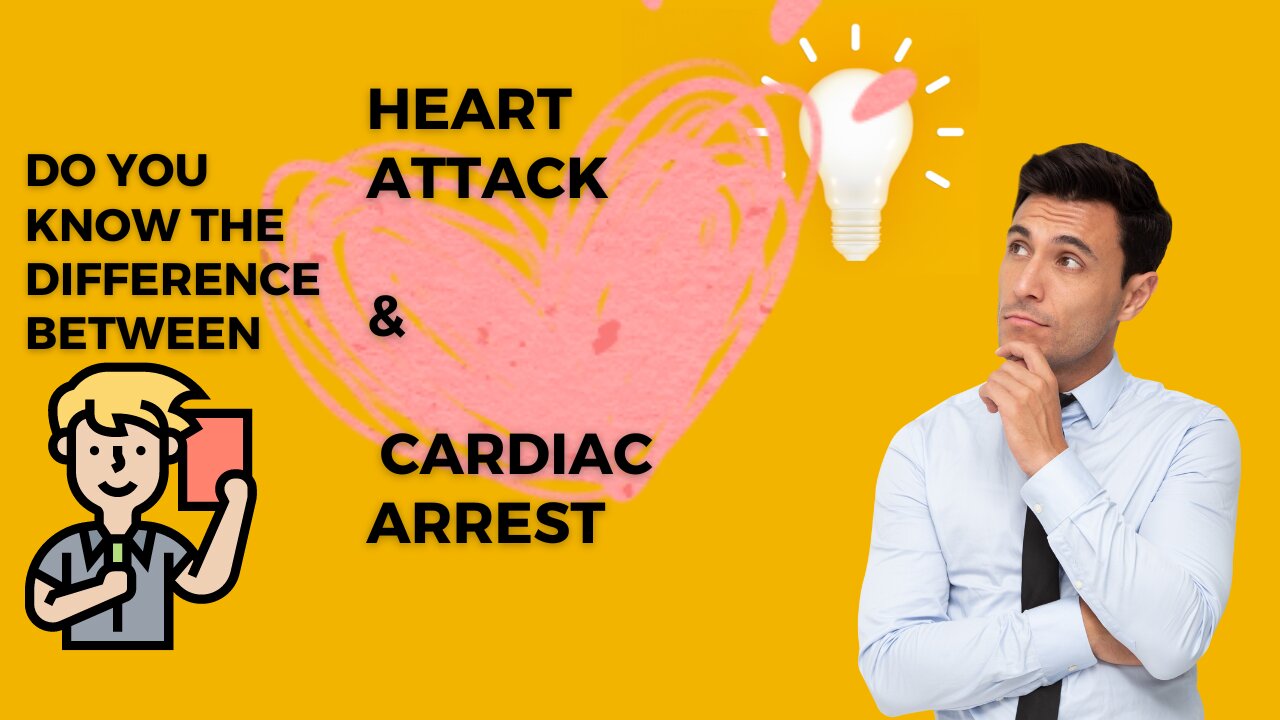Premium Only Content

Difference between Heart attack and Cardiac Arrest
Heart attack and cardiac arrest are two distinct medical emergencies involving the heart, but they are often confused due to their similar-sounding names. Here's a brief overview of the differences between the two:
Heart Attack (Myocardial Infarction):
A heart attack occurs when blood flow to a part of the heart muscle is blocked, usually by a blood clot.
This blockage can occur in the coronary arteries, which supply the heart muscle with oxygen and nutrients.
The lack of blood flow can cause damage to or death of the heart muscle cells.
Symptoms of a heart attack may include chest pain or discomfort, shortness of breath, nausea, sweating, and pain or discomfort in the arms, back, neck, jaw, or stomach.
Immediate medical attention is crucial to minimize damage to the heart muscle. Treatment may involve medications, angioplasty, or bypass surgery.
Cardiac Arrest:
Cardiac arrest is a sudden loss of heart function, which can be caused by various factors, including a heart attack, arrhythmias (irregular heartbeats), severe electrolyte imbalances, or other underlying heart conditions.
During cardiac arrest, the heart stops beating, and blood circulation ceases.
This medical emergency leads to the loss of consciousness and absence of a pulse.
Cardiopulmonary resuscitation (CPR) and the use of an automated external defibrillator (AED) are essential in the early stages to restore a regular heart rhythm and maintain blood circulation.
Immediate emergency medical attention is critical for the best chance of survival.
In summary, a heart attack is related to a blockage in the coronary arteries, leading to damage or death of the heart muscle, while cardiac arrest is the sudden cessation of the heart's pumping function. A heart attack can contribute to cardiac arrest, but they are not the same thing. Immediate medical intervention is crucial for both conditions, but the treatments and goals are different.
-
 2:05:07
2:05:07
Darkhorse Podcast
19 hours agoWhy Trump Wants Greenland: The 257th Evolutionary Lens with Bret Weinstein and Heather Heying
230K403 -
 8:50:58
8:50:58
Right Side Broadcasting Network
19 hours ago🎅 LIVE: Tracking Santa on Christmas Eve 2024 NORAD Santa Tracker 🎅
258K36 -
 2:48
2:48
Steven Crowder
22 hours agoCROWDER CLASSICS: What’s This? | Nightmare Before Kwanzaa (Nightmare Before Christmas Parody)
242K12 -
 33:49
33:49
Quite Frankly
18 hours agoThe Christmas Eve Midnight Telethon
60.2K7 -
 2:12:46
2:12:46
Price of Reason
18 hours agoAmber Heard BACKS Blake Lively Lawsuit Against Justin Baldoni! Is Disney CEO Bob Iger in TROUBLE?
17.8K8 -
 1:01:17
1:01:17
The StoneZONE with Roger Stone
12 hours agoChristmas Edition: Why the Panama Canal is Part of the America First Agenda | The StoneZONE
94.5K31 -
 18:12:15
18:12:15
LFA TV
23 hours agoLFA TV CHRISTMAS EVE REPLAY
117K14 -
 4:33:48
4:33:48
tacetmort3m
1 day ago🔴 LIVE - THE ZONE KEEPS PULLING ME BACK - STALKER 2 - PART 15
61.5K12 -
 22:45
22:45
Brewzle
20 hours agoI Went Drinking In A Real Bourbon Castle
43.4K4 -
 48:36
48:36
PMG
1 day ago $3.71 earned"Parkland Parent Speaks Out On Kamala Harris Using Victims"
35.4K8